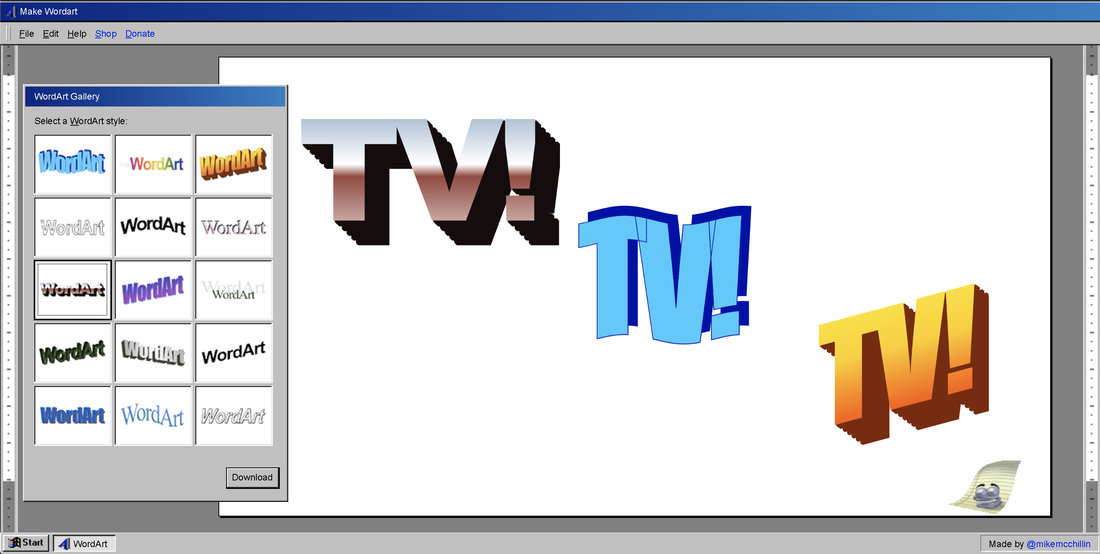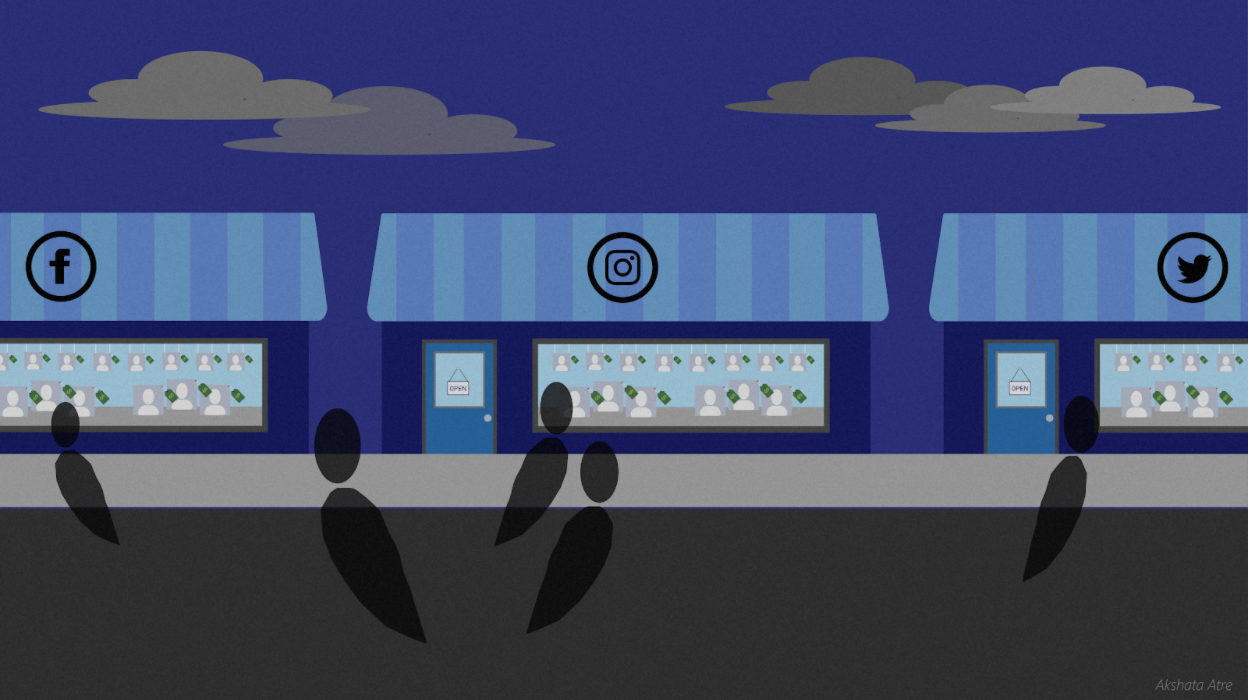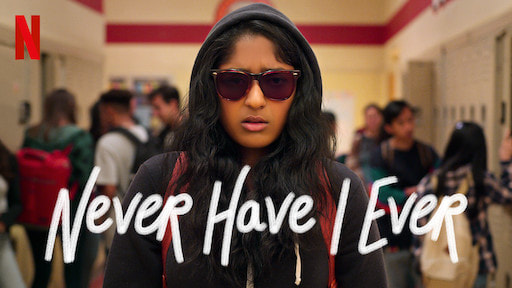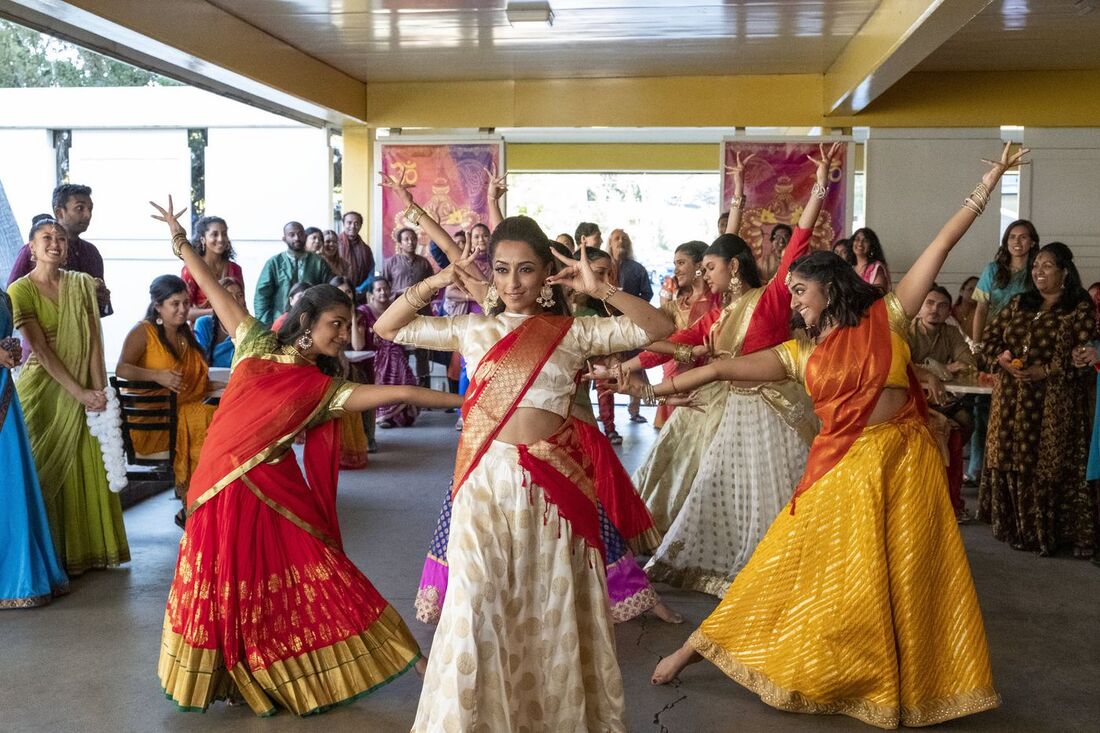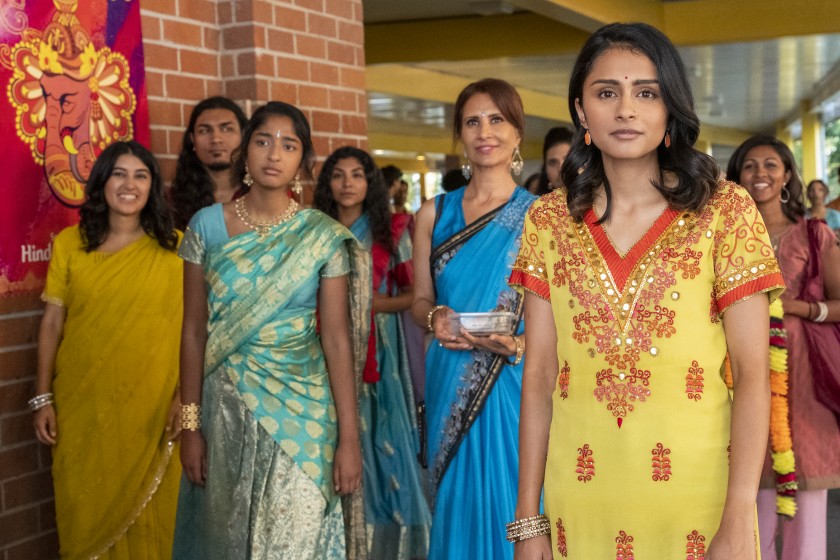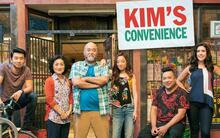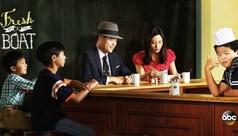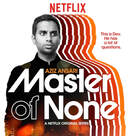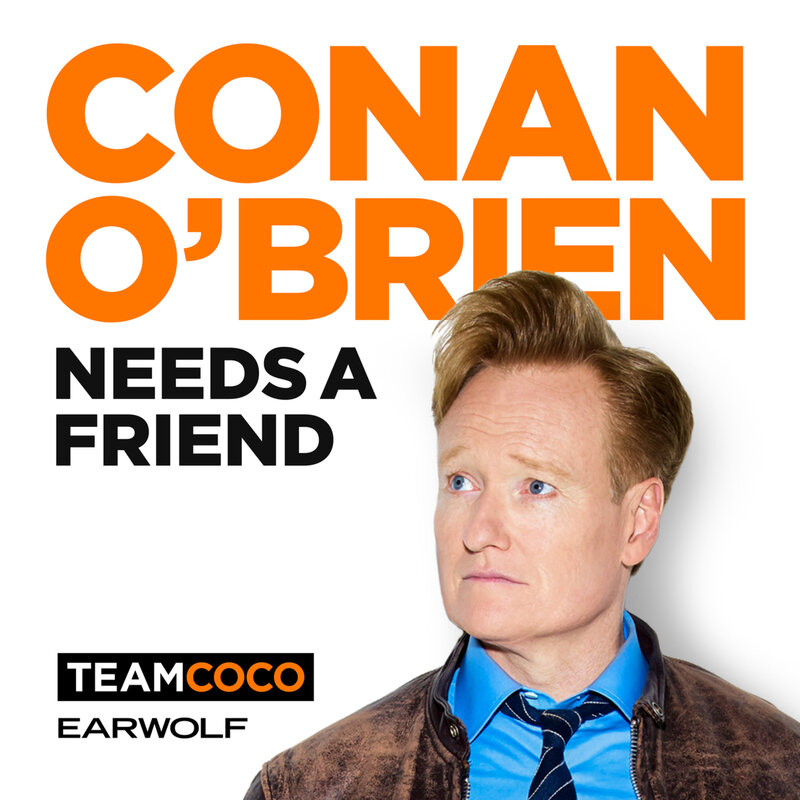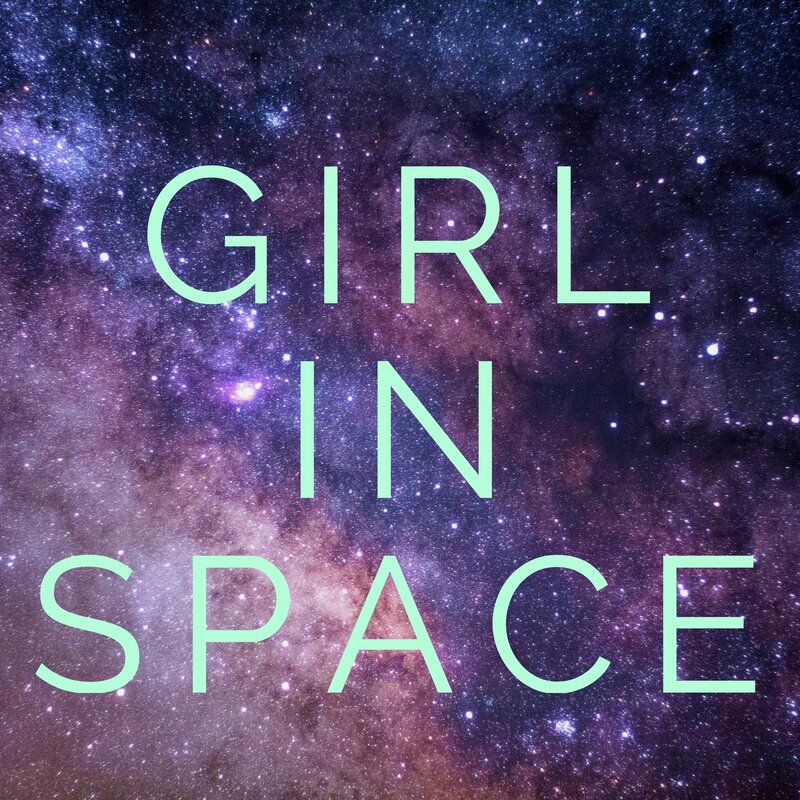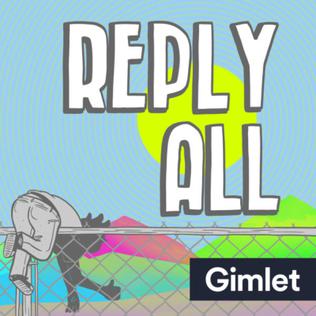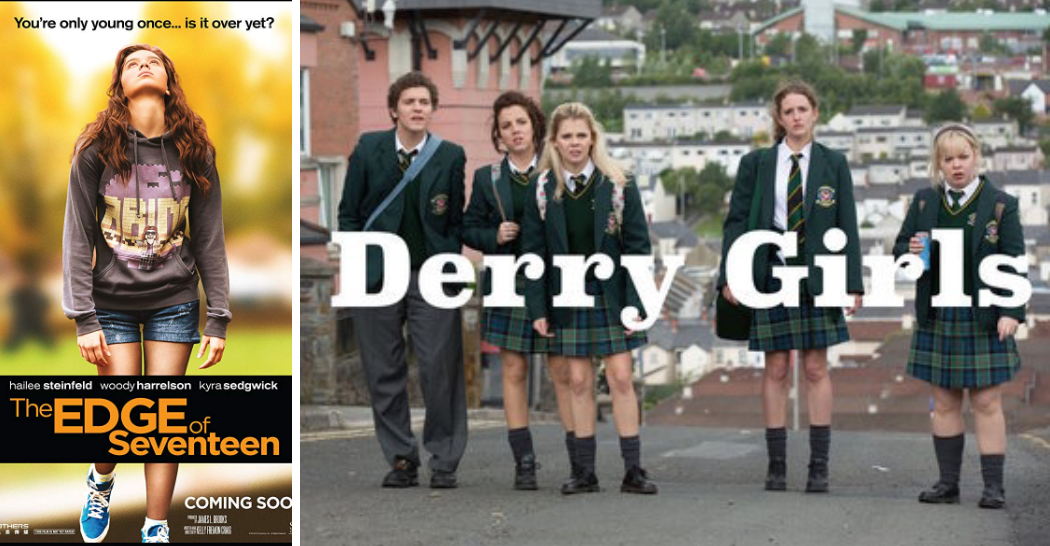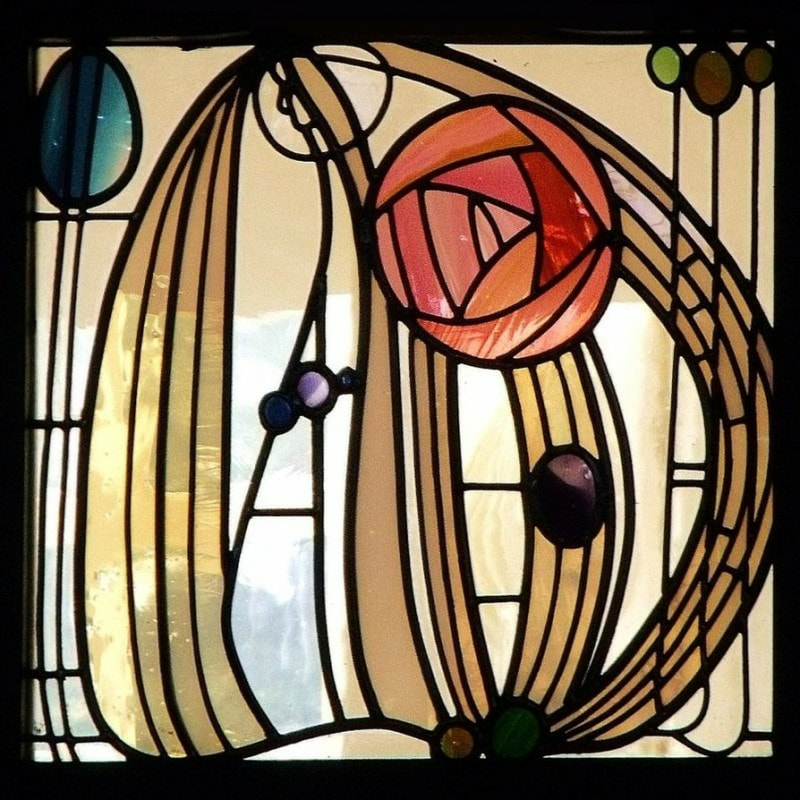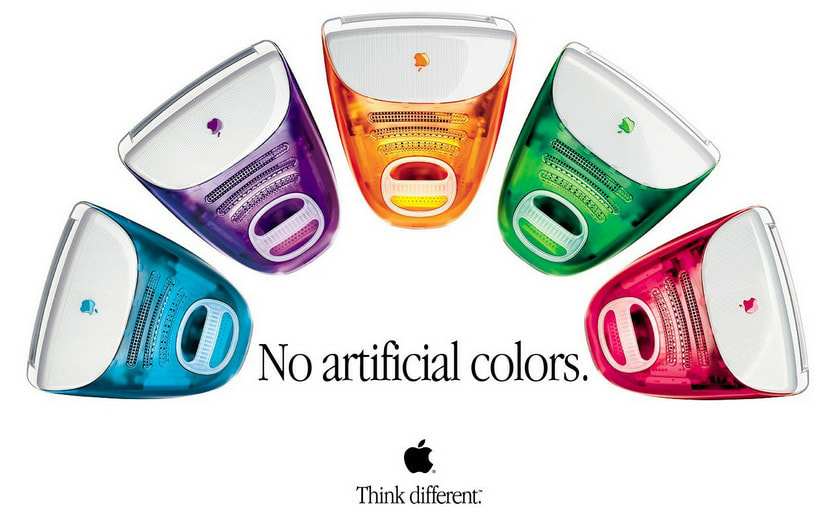|
by Akshata Atre I watch (probably) way too much TV. So much so that I’m not even going to try to pull together a list of my top TV shows of all time. Instead, as we head into what’s most likely going to be a pretty brutal winter, I’d like to share a few of the best shows I’ve binged in the hell that is 2020. These shows have brought me a lot of comfort this year, and hopefully they can do the same for you!
Community (Netflix) Yes, Community is on Netflix now and yes, I think it’s worth the hype. Frankly, there’s not much more I can say about how great this show is, but if you’re a fan of late 2000s comedies, this is a can’t-miss. The writing & main cast are both fantastic, the storylines are so wonderfully bizarre without being too over-the-top, and even the xany side characters add so much depth to the world of Greendale Community College. And if you’ve ever felt that the half-hour sitcom is hindered by its time constraint of 21.5 minutes, Community is here to prove you wrong. Just maybe skip season 4. After all, there was a gas leak. Alias Grace (Netflix) I’m a sucker for period dramas, and this is only the first one on this list. Based on Margaret Atwood’s novel by the same name, Alias Grace is set in late nineteenth-century Canada and tells the pseudo-true story of convicted murderess Grace Marks. Overall, I thought the show held pretty true to Atwood’s novel, the few typical Hollywood changes aside. Sarah Gadon is fantastic in the role of Grace, her emotions perfectly calculated as she recounts her life story to Dr. Simon Jordan (Edward Holcroft), a psychiatrist tasked with proving her innocence. The cinematography is also stunning, and all the actors are wonderful-- I especially love Gadon’s Irish accent and Zachary Levi’s surprise appearance. Another bonus is how short the show is-- a mere six episodes, each one better than the next. Peaky Blinders (Netflix) Am I late to the party? 1000%. But what was extra fun about watching Peaky Blinders this summer was watching it with a friend over Zoom! Okay, maybe not that exciting, but this show definitely is. Another period drama-- set right after World War I-- Peaky Blinders follows the members of the Birmingham gang of the same name as they rebuild their underworld empire and rise to new heights of power and wealth. Gorgeous cinematography, gorgeous cast, amazing storylines, and also a very successful use of modern music to score a period drama. I seriously cannot recommend this show enough, but be warned: you will need subtitles, and also season 5 ends on a pretty big cliffhanger which, given the pandemic, will probably not be resolved until 2022. But there are always Reddit theories to tide you over until then. The Inbetweeners (Netflix) Every time I stumble on a UK TV show like the Inbetweeners, I wonder why we don’t have a good US equivalent, because I’m definitely missing like 50% of the culture-specific jokes in both The Inbetweeners and the similarly-styled Derry Girls. But regardless, this show is absolutely hilarious and provides such a great perspective on what it’s like to be the kind of teenager who’s not the focus of typical teen TV dramas. The show follows Will and his (forced) friends Simon, Neil, and Jay and their misadventures in English public school. The boys are all wonderfully idiotic and misguided in their outlook on life, and although their antics are cringy, the characters’ self awareness keeps the show from falling into “Scott’s Tots” territory. The show is also another quick watch, with just 18 20-ish minute episodes. Upload (Amazon Prime) If you love The Good Place and Black Mirror, Upload is like a perfect hybrid of the two. Created by Greg Daniels-- yes, that Greg Daniels, creator of the US The Office-- the show follows Nathan (Robbie Amell) through his death and subsequent “upload” to the digital afterlife of Lake View as he develops a friendship with his virtual “Angel” Nora and tries to figure out how he died. The best way I could describe this show is if you took “San Junipero” from Black Mirror, expanded it, made it funny, and added in an anti-capitalist subplot. Basically all the ingredients for an awesome sci-fi comedy. Space Force (Netflix) Another one from Greg Daniels… AND Steve Carrell?! Space Force is about, well, just that: it’s a comedic interpretation of the United State’s newest military branch. Although you might expect a Netflix show chock-full of comedy heavy-hitters to be a disappointment like the trailer suggests, Space Force is actually well worth the watch. Steve Carrell and his co-star John Malkovich are fantastic, the writing is almost too on-the-nose, and Ben Schwartz plays a social media director. What more can I say? This is also another show that does a good job fleshing out its supporting cast, which I always think makes a show like ten times better. But also maybe wait until after the election to watch this one. The IT Crowd (Netflix) Picking up on the theme of British TV yet? A widely-beloved classic, I have to admit I was initially turned off by the multi-cam plus laugh track set up of this show. But a couple of episodes in you quickly realize that the audience laughter is truly deserved, and the writing on this show is just fantastic. The daily lives of Roy, Moss, and Jen down in the basement IT Department of Reynholm Industries are so bizarre yet also true-to-life in an The Office-satire kind of way… this show is just plain great. I wish there were more episodes!! Also, the show has instilled in me an everlasting love for Richard Ayoade. And can you believe The IT Crowd was on the air at the same time as Community, The Inbetweeners, The Office, and Parks and Rec? I mean, come on. The Babysitter’s Club (Netflix) This one’s for the nostalgia. I still remember checking out the Babysitter’s Club books from my elementary school library and reading them late into the night. While the show isn’t set in the 80s like the original novels were, it’s a very cute adaptation of the first few books in the series, and a very light watch-- I finished the whole show in a weekend. The cast is absolutely adorable, and I actually found the writing pretty funny. I think people who haven’t read the books would still like the show, but for fans of the original series (and maybe also the 1995 movie) it’s definitely a fun adaptation. Happy viewing! :)
0 Comments
by Akshata Atre I “quit” social media a while ago. I mean, I didn’t quit entirely. It’s actually kind of impossible to do that if you’re a college student who wants to at least maintain the appearance of having a social life. But I still scrambled all my Instagram passwords, blocked Twitter, and only used Snapchat back in freshman year (of college) for maybe two months. But I’m still unfortunately bound to my Facebook account. I just can’t find a way to not have one and remain even somewhat in the loop. I did delete the app (the main one and messenger), unfollow all the people I’m friends with, and remove a ton of my page “likes,” though. Yet, even with all those measures in place, I still get that dopamine rush when I do login and see that I have a notification, even if it does turn out to just be someone’s birthday. Something about those red bubbles with tiny white numbers in them just inadvertently triggers that response in me-- and I really, really hate it.
The most frustrating thing about the whole situation is that, of course, those red bubbles are designed to elicit that exact emotional reaction. That’s the whole point of them. They’re meant to get you to log onto the site or open the app and scroll. And scroll. And scroll. And for what? Not to sell you products, but to sell you. Your attention. And that’s a distinction that’s made clear in the new Netflix documentary The Social Dilemma. In the film, a group of former Silicon Valley tech executives & other experts dive into the inner workings of Facebook, Instagram, Pinterest, and the like. One of the key takeaways from the film is that the algorithms that run these platforms are a) programmed to have an outcome that is directly linked to profit; b) trying to do everything they can to keep you using the app/site longer in order to achieve that profit goal; and c) not even fully understood by the people who made them anymore. That second point that really stuck with me throughout the film, particularly when it was dramatized in one of the several scripted storylines presented in the film. In this storyline, the algorithm is portrayed by three men behind a screen who are feverishly trying to maintain the main character’s attention in order to win “bids” from various companies who want to put advertisements in front of him. We see how they use increasingly personal push notifications to draw him back into the app. Then, once they get him back on the app, they start pushing extremist political content into his feed, sucking him in even further. This story, although depicted in kind of a cheesy way, is not far from the truth. We’ve all heard about how terrorists are using social media to recruit people, and even how YouTube’s algorithm pushes increasingly extremist content the further down the rabbit hole you go. The latter is of course a great example of how this desire to increase engagement (which is essentially the point of an algorithm like YouTube’s) can lead people to content that is largely opinion-based and nonfactual. This essentially means that we no longer share a common understanding of what truth is. Because we’re not all getting the same information when we open Google. The algorithm literally prevents that from happening-- if we see the truth, we’re not always going to like it. And the algorithm doesn’t want that. It wants us to like what we see. So it shows us things we already agree with, regardless of whether or not it’s true, playing into our confirmation biases and keeping us scrolling, scrolling, scrolling, all the while collecting information that allows advertisers to target us so directly it’s scary. And the longer we scroll, the further we’re split into right and left, the lonelier we get, the sadder we get, the more anxious we get, and the further we get from reality and truth itself. So back to the first point about algorithms-- why are social media companies allowing their algorithms to push this kind of content and manipulate us this way? Profit. Their whole business model is based on finding ways to get your attention and then selling that attention, your attention, to advertisers, who are essentially funding these platforms. But it’s really more than just your attention; as Jaron Lanier puts it in the film,“it’s the gradual, slight, imperceptible change in your own behavior and perception that is the product.” Think Instagram influencers, extremely targeted ads, and the like. You don’t even realize that’s what’s happening half the time. And that is worth SO MUCH MONEY. Money is what this all comes back to at the end of the film. These companies are making so much money that they have no reason to stop these out-of-control algorithms, to stop collecting our data, to stop selling us. A corporation (contrary to the infamous Citizens United case), is not a person. It has no conscience. It’s not going to make ethical decisions for the sake of being ethical. The only way the machine will stop is if it’s forced to because of a monetary penalty or incentive. Regulations, taxes, changing the stock market so that it’s not a short-term quarter-over-quarter growth system, these are all solutions presented by the people interviewed in the film. And these options (excepting the third) have, in fact, worked in other industries. Until those larger systems change, tech companies aren’t going to make any changes themselves. And those systems won’t change unless people demand that they do. As many terrible things as there are going on right now, I really believe that this is an important issue to address. Because so long as we as a society can’t even agree on what is actually happening, what the truth is, we are never going to reach a solution on any of the many pressing issues we’re facing. You can’t build a car if half your designers think they should be building an airplane and the other half think they should be designing a submarine. And you can’t address climate change, discrimination, or economic inequality if people don’t even agree that they’re real. Thankfully, the interviewees in the film do offer a variety of actionable solutions at the end of the film, which I won’t list out here because I highly recommend you watch the film yourself. But what I would like to share are a couple stanzas from Bastille’s latest song, What You Gonna Do???, which came out in July of this year. As usual, their words are as poignant and timely as ever. "Shake, rattle and roll / You got control / Got my attention / Make me tap and scroll / You got control / Got my attention Listening, you got us listening / So what you gonna do with it? / You got us listening So what you gonna do? / Now, what you gonna do with it? / Make me paranoid / Love me, hate me, fill the void / What you gonna do with it? / So who am I? You decide / Inside out, you read my mind / What you gonna do with it?" And since we can’t all get in the faces of tech CEOs to ask them this question, watch The Social Dilemma (and maybe also read The Circle and reread 1984) and then do what you can to stop being a product and find the unfiltered truth. by Akshata Atre Representation is all the rage on TV nowadays. Well, at least for Netflix. So it wasn’t really surprising to learn that Mindy Kaling was approached by Netflix to write a semi-autobiographical show about the Indian-American experience. When I first heard about the show, I was pretty excited. The only other piece of Western media about an Indian girl I can think of is Bend It Like Beckham. (Which, by the way, is amazing, and I will forever stand by that, aside from the very disappointing ending, but that has more to do with my love for Keira Knightley, so not super relevant here.) ANYWAY, back to the show at hand (titled Never Have I Ever, which provides for a series of cutesy “...episode titles”). Like I said, when I heard about the show, I was very excited. I love Mindy Kaling, and I trusted that she would write a funny, relatable show. But then I watched the trailer and it was just . . . not at all what I was expecting. It was all shirtless boys, friend drama, teenage angst-- just basically a standard teen romantic comedy drama. Save for a few snippets of a Ganesh puja, it was all just so . . . generic American high school. Nothing seemed really specific to the fact that the main character, Devi, is Indian. I was really hoping that the show itself would prove me wrong. But, unfortunately, it didn’t. The first two episodes in particular were extremely off-putting. Devi’s fervent pursuit of a boyfriend in order to “get over” the tragic loss of her father, after which she was psychosomatically paralyzed for months, was extremely emotionally jarring. But on top of that, aside from her brief conversations with her mother about her “blessed” textbook (which felt like a weird stereotypical jab), I felt as though Devi could easily have been replaced with any number of white actresses in those first few episodes. Episode 4, “Never Have I Ever. . . felt super Indian,” was one that I thought would turn the show around (at least in my eyes). The episode is about Devi attending a Ganesh puja held by the local South Indian association. Devi is super unhappy about going, because she’s the type of Indian girl who isn’t super thrilled about the fact that she has to participate in Indian traditions. Which is a completely fair take, especially since Kaling said that this particular attitude is one she had growing up in an extremely white community. There are a couple of characters at the event that sort of call Devi out on her attitude (one of whom alludes to Kaling’s own experience with a college roommate who was very proud of her Native American heritage, making Kaling question her own relationship to her heritage) but Devi doesn’t buy into it. She remains semi-embarrassed about her presence and participation in the event and uncomfortable about her itchy sari. This dual-culture dilemma is something that almost all first generation Indian-American kids struggle with. People approximately fall along a spectrum ranging from “trying to ignore the fact that they’re Indian and changing their name to something American” to “being super proud and wearing a lengha to school on Diwali.” There’s ultimately no right answer to where people end up-- a lot of it is based on where you grew up and if there were other Indian kids at your school. But what didn’t gel with me was the fact that Devi was suddenly super cool with the fact that she was wearing a sari when her main love interest, Paxton, said that it looked good. I don’t really know how to articulate how that whole interaction made me feel other than to say it was. . . icky. Overall, although I did enjoy the jokes about aunty gossip and how no one understands what pujaris say, the episode just felt like a rehashing of Kaling’s “Diwali” episode of The Office. Which is a great episode, it’s just kind of specific to the time in which it was made (the episode aired in 2006). So I was hoping we could move beyond the stereotypical jokes about Indian parents wanting their kids to get married and just generally being hella judgemental. I would have loved to hear more about the girls in the episode who tell Devi that their Bollywood dance teams compete at a national level, instead of remaining focused on Devi’s negative judgements about that accomplishment. And again, while I get that this episode was meant to reflect Kaling’s struggles with accepting her culture, as someone who has felt embarrassed about wearing a salwar kameez in public, it would have been really nice to see desi kids in a show being proud of their heritage in less of a vignette/side-plot type of way. An amazing dance performance . . . and then Devi (in the turquoise sari) judging it. I think that Kaling’s own struggle about her cultural identity is the reason why this show feels more aspirational than representational. In her interview on Fresh Air, Kaling herself said that she never had a boyfriend in high school, in part because she was forbidden from dating, but that she remained boy-crazy. So by making this show about Devi pursuing (and ultimately ending up with two) non-Indian love interests, it almost feels like Kaling wrote a story about what she wishes her high school experience had been like. And that experience, as my mom put it after she watched the show, is what Indians of her generation thought American high schools were like based on reading Archie comics. That is to say, the show doesn’t reflect the reality of life in an American high school, or the reality of the first generation Indian-American experience. Aside from what might have been Kaling’s own personal aspirations, the whole show overall felt like it was written not for Indian-Americans, but for white people. So many of the show’s jokes scream “look at me, I’m just like you. . . I’m just brown.” It feels like Devi is (or at the very least the show’s writers are) constantly trying to prove that she’s just like any other female lead in a John Hughes movie or a DCOM. Which is what I mean by saying the show is aspirational. It’s aspiring to a reality where white people think that immigrants have similar life experiences to them. But that’s not always the case. And it’s TOTALLY FINE and HEALTHY to acknowledge that. This is the same reason why Kelly Kapoor and Tom Haverford (characters from The Office and Parks and Recreation, respectively) hardly ever acknowledge the fact that they’re Indian. Both Mindy Kaling and Aziz Ansari (the actors who portray these characters) grew up in predominantly white communities and really just wanted to fit in. But it’s not the 80s anymore, and if Kaling really wanted to represent modern teenagers like she has said, I think her sensibilities about racial relations in America (at least regarding South Asians) could have evolved in parallel to the show’s writing about Instagram and internet slang. We’ve moved beyond the need to prove that Indian-Americans can “fit in.” We don’t need to show that Indian-American teenage girls can be “complicated” in the ways that characters in teen rom-coms are. What we need is a show about how we're complicated in our own ways, and how those complications do, in fact, relate closely to our heritage and relationships with our communities. Being Indian is not, as one Vanity Fair writer so eloquently put it, “just one aspect of the general bullshit” that Indian-Americans have to “put up with.” A person’s culture is a part of who they are, not something that should be perceived as forced upon them. And to depict it as the latter does more harm than good. This is why I feel that shows like Fresh Off the Boat and Kim's Convenience have been more relatable and enjoyable than Never Have I Ever and Ansari’s more adult Master of None. These shows take the time to flesh out all the members of the families around which they are centered, and as such provide a more multifaceted and complex depiction of what it is like to be a first-generation immigrant. Within the Huang family on Fresh Off the Boat, for instance, we get to see the range of how immigrant children relate to their heritage-- Evan and Emery follow their mother Jessica’s approach to tradition and schooling, while Eddie immerses himself in the music of Tupac Shakur and The Notorious B.I.G. Even the parents reflect this dichotomy; the father, Louis, really tries to fit into the Orlando community by opening a country-themed steakhouse while Jessica remains committed to imparting Taiwanese traditions to her children. It should be noted that these shows also enjoy a great deal of controversy in their respective communities-- Eddie Huang, whose book Fresh Off the Boat inspired the TV show, feels that it does exactly what I have just criticized Never Have I Ever for doing. This all goes to say that it’s hard to write shows that appeal to all members of the first-generation, broadly Asian, immigrant community. The lead actress of Never Have I Ever, Maitreyi Ramakrishnan, wrote that the show only tells the story of one Indian-American girl’s experience, and that “there are still many stories waiting to be told.” While that may be true, I still feel justified in my frustration that Never Have I Ever was the first show to try to give us that representation. I’d like a show that doesn’t call me out for not having had a “typical” American high school experience full of parties, friends, school trips, and cringey romantic interactions. I think a family show, for instance, would be better than a To All the Boys I've Loved Before-type show about an erratic and sometimes downright unlikable teenage girl. For instance, Never Have I Ever only has one Indian-American teenage boy with a speaking role, and he disappears altogether after his one minute of screen time. And Devi’s father is only ever shown in flashbacks. So, as Ramakrishnan said, there are a LOT of other stories to be told. I just wish-- and really feel like they could have-- been told in this show. Because representation really matters, and it’s more than just putting a person of color in a leading role. While researching for this piece, I came across this really great quote from Jean Yoon, the actress who plays Umma on Kim's Convenience: “It’s really important to have representation because people who don’t see themselves on screen start to feel invisible and their stories are not understood by others, and it’s really easy to sort of slide into this place where you stop recognizing your own value.” I have, at many moments in my life, felt invisible and misunderstood, in part because I felt so alone in my experiences regarding my relationship with my parents, the constant pressure I put on myself to do well in school, and my struggles to communicate with my family back in India. And watching Never Have I Ever didn’t make me feel less alone. And that kind of sucks, because I fall smack dab in the middle of the very specific target demographic for this show. But it’s not all a downer. ABC is reportedly moving forward with a show centered around an Indian-American family as a spinoff of Fresh Off the Boat (as of October 2019). The characters that will star in the show have actually already appeared on an episode of FOTB, and the actress set to play the mother is none other than Preity Zinta, who was one of my FAVORITE Hindi film actresses when I was younger. (Like, I can’t even begin to express what a huge star she is, she’s amazing.) So while Never Have I Ever may not have given me the representation I was looking for, I think there’s hope yet for a show that does provide a more complex and holistic insight into the Indian-American experience. And it might be with Preity Zinta! by Akshata Atre As much as I’d like to say that I’m an avid reader or that I’ve watched all the latest movies and television shows on the infinite streaming platforms that now eat away at our bank accounts, the truth is that as an anxious, overworked college student, I don’t consume much new media. To cope with a lot of my daily life, I turn to basic staples such as The Office, Parks & Recreation, and Friends (before Warner Media snatched it off of Netflix) and other shows that I’ve already watched more than five times over.
The only way I can really drag myself out of this repetitive cycle of consumption is through my headphones. Those giant headphones that I wear all. the. time. Because for some reason, it’s much more boring to listen to the same podcast over and over again than it is to rewatch “Dinner Party” for the ninth time. So, to start off this semester, I thought I’d share what it is I listen to when I’m avoiding talking to literally any other human being in this city. I hope this list can bring some of you enjoyment on your hasty walks across campus too. Reply All This podcast has a pretty straightforward logline: it’s a podcast about the internet. So, as you might imagine, it gets into some pretty random stuff, from Billy Joel to the DMV. The hosts Alex and PJ have a very enjoyable rapport, especially when they bring in their boss for my favorite segment on the show, Yes Yes No (in which Alex Blumberg brings in a tweet that he does not understand and Alex Goldman and PJ Vogt explain it to him). My two favorite episodes are “Long Distance” (in which Alex tracks down a spam call center in India) and “The Q Anon Code” (a classic Yes Yes No). The network this podcast is on, Gimlet, also has some other great shows such as Science Vs. with Wendy Zuckerman, which is loaded with puns and an amazing narrative fantasy podcast called The Two Princes. Alba Salix, Royal Physician / The Axe & Crown Set in an alternate universe where trolls, fairies, and humans all live in (sort of) harmony, these fantasy-comedy podcasts are the perfect way to escape reality. The original, Alba Salix, follows Alba, a witch, and her two assistants as they try to heal various characters in their kingdom. The spin-off, The Axe & Crown tells the story of human Stan who has purchased a pub run by a troll named Gubbin. The voice actors on both the shows are fantastic, and I really love when their Canadian accents poke through :) Also stick around for the happy, forest-y theme music Girl In Space This dramatic narrative podcast is a collection of audio diaries recorded by a mysterious woman-- known only as “X”-- who is living on a spaceship by herself . . . until she is taken prisoner by an aggressive space crew. Although the episodes are only about half an hour long, the somewhat slow pace of the narration makes the experience of listening satisfyingly drawn-out. I also love the voice acting on this one. (One disclaimer: it’s going to be a long wait for season 2, since the podcast is run by an independent writer. But I think it’s going to be worth it.) Conan O’Brien Needs a Friend Okay, I’ll admit it. I had never watched or really known much about Conan before my mom recommended this podcast to me. But this podcast has shown me the light. As soon as you start listening to this podcast, you too will realize that Conan is one of the funniest comedians ever. Honestly, the best part of this podcast might just be the conversations he has with his assistant Sona (who I adore) and producer Matt (who sketches in the park with his mom once a month!). It’s such an enjoyable office dynamic that also led me down the rabbit hole of his remotes with the stone-faced Jordan Schlansky. Start with the episode with the marvelous Lisa Kudrow. (Also related: The Three Questions with Andy Richter. I LOVED the episode with Natasha Lyonne.) Bay Curious As a South Bay native, it’s my self-appointed duty to love and learn everything about the Bay Area. And, for those like me, there’s a podcast for that. Bay Curious from KQED brings you all the secrets, mythologies, and facts about the Bay Area that will make you love being here even more. They even have an episode about what’s really inside the Campanile! You’ll also get to learn about what famous foods were created around the Bay, the origins of SantaCon, and much, much more! Invisibilia Want to feel like you consume intelligent content that provides you with good conversation fodder? This one’s for you. Invisibilia is a podcast from NPR that explores the “unseeable forces that control human nature.” The stories are generally very intriguing and can teach you a lot about how your own psyche works. I highly recommend the episode “Entanglement,” which explores mirror synesthesia and make you realize that you’re not really an “empath.” Historical Figures (aka “Famous Fates”) Another fun educational podcast that provides digestible biographies of notable figures in history with fun music and voice acting. The name of this podcast has changed a few times, but if you look up “Parcast” podcasts, it should come up in some shape or form. While you’re looking, I’d also recommend the Conspiracy Theories podcast from the same network. Both shows have great episodes on Marilyn Monroe. Gossip This scripted dramedy series from Allison Raskin (of Just Between Us fame on YouTube) is a fun, albeit a little cheesy show about . . . gossip. Although it’s obviously (mostly) fake, listening to Bethany, Valerie, and Mia talk about their upstate New-York neighbors in what sounds like an adorable coffee shop is just so relaxing, and it definitely satiates my need for random facts about people I don’t know’s lives. Protip: start from the beginning; there is a throughline! Throughline Speaking of throughlines, this podcast, also from NPR, traces current events back to their historical roots. I really enjoy this show both for its compelling storytelling and its experimental score. One of my favorite episodes is called “American Shadows,” which dives into the role of conspiracy theories in the founding of the United States. . . . and a few more . . . It’s Been a Minute with Sam Sanders | Office Ladies | The Good Place: The Podcast | The NPR Politics Podcast | Up First | 99% Invisible | Hidden Brain | The TED Radio Hour | Radio Diaries | Pop Culture Happy Hour | Shortwave Happy listening! by Akshata Atre (tw: mention of self harm)
“Sorry.” “Excuse me, sorry.” “Sorry!” “Oh my god, sorry” Ask any woman how many times a day she says sorry, and the number is probably higher than you think. Much higher. We apologize constantly. And if you’re a woman and you say “sorry” fewer than five times a day, I genuinely commend you for breaking the cycle. Because it runs deeper than we may think. I found myself confronting this reality in a less-than-frivolous sense whilst watching the 2016 teen movie The Edge of Seventeen, starring Hailee Steinfeld. Watching that movie made me so frustrated and anxious that my hands quite literally shook. And look, I know I’m in the minority here (as it’s rated 77% on Rotten Tomatoes and was positively reviewed by critics). However, as someone who has dealt with her fair share of being alone in the aftermath of difficult social situations, this movie made my blood boil. The film opens with the main character, Nadine, storming into her teacher’s classroom with the declaration that she is going to kill herself. From there, the film works backwards to uncover what has happened to Nadine up to this point, primarily the fact that her childhood best friend Krista (read: her only friend), has started dating Nadine’s uber-popular older brother, Darian. Nadine is understandably extremely upset, and being left in a fragile emotional state after fighting with Krista leads her to do some rather shockingly regrettable things, namely sending a very graphic sext to her crush and stealing her mom’s car. You can probably guess where the movie is going. Nadine confronts her brother, only to learn that her brother has problems too, like having to “deal” with their emotional mother (who does not get along with Nadine at all) and the fact that Krista is the only girl right for him (a boy who, you might remember, a super popular jock). So Nadine must apologize to him for not understanding that he has issues too and blah blah blah. She then becomes friends with Krista again, even though Krista fully ditched Nadine to hang out with Darian’s “cooler” friends. Oh, and Nadine ends up with the cute nerdy boy, because that’s what happens in all teen rom coms I guess. She even apologises to her new boyfriend because she didn’t realize that he was into her, which is somehow her fault? Look, it’s fine that Nadine apologizes and owns up to her mistakes. Like I guess ethically that’s the right thing to do. But the thing is, no one ever really, truly apologizes to Nadine. Her mother, Krista, and Darian all blame her for her emotional response to the situation without acknowledging that they have left her totally alone to deal with all of her issues. She literally has no one to talk to. She’s all alone. And yet she’s supposed to bear the burden of apologizing and begging for her forgiveness when she was just reacting to what other people have done. Why is she supposed to be okay with her brother tearing her only friend away from her? Like, what sense of male entitlement is that on his part? And seriously, are we supposed to believe that her getting a boyfriend is what makes it all better? I mean really. This is 2016, not 2006. To me, all this apologizing that Nadine must do underscores that fact that women in film and television are still, for the most part, not allowed to make mistakes. If they mess up, they have to repent right away, or else they won’t be able to move on with their lives or pursue a romantic relationship, which is still, frustratingly, the end goal for so many of these stories. However, while 2016 brought us tired teen movie tropes in The Edge of Seventeen, 2018 brought us some refreshing female representation in Derry Girls, masterfully written by Lisa McGee. This television program brought to the US via Netflix from Channel 4 in Ireland is an absolute gem of comedy gold. The show is set in Derry, Northern Ireland during The Troubles (the conflict between the Loyalists and Irish nationalists) of the 1990s. The story follows Erin, Clare, Michelle, and Orla-- all of whom are fully developed characters with vibrant, colorful, and hilarious personalities-- as well as Michelle’s British cousin James, a sweet and scared comedic punching bag you can’t help but root for. In the very first episode, we see the five teens end up in detention after threatening some younger girls on the bus. During detention, a sequence of absolutely absurd and hilarious events occurs (which I simply cannot do justice in this post). To poorly summarize: Erin tries to escape to see her crush David’s gig, Michelle tries to steal her lipstick back from a (seemingly) sleeping nun, Clare inhales a sandwich (having completed a four hour fast to raise money for children in Africa), and James pisses in a trash can (as there are no boy’s toilets at the girls’ all-girl Catholic school). When they realize that the nun is, in fact, dead, they are found out by the delightfully sarcastic headmistress Sister Michael, who proceeds to call their parents and tell them off as best she can, a difficult task given that she cares very little about her job. The episode then ends perfectly, and you are immediately left wanting more. And you get more, because in every episode the gang manages to get themselves into some kind of deliciously ridiculous mishap (which I won’t even try to summarize because you just have to see it for yourself). The point is that these multi-dimensional, strong female characters (and James) are allowed to mess up over and over again, and they are rarely made to apologize for what they’ve done. It’s understood that they’re kids, and they should be allowed to make mistakes, have fun, and be themselves. While there are cliche romantic side plots sprinkled into the show, they are never the focus, and they are never the end goal. The focus is solely on the girls (and James, kind of)-- their insecurities, flaws, and, to some extent their strengths. In Derry Girls, we finally get to see female characters as real girls with real personalities. They aren’t perfect, and they don’t try to redeem themselves all the time, because, let’s be honest, none of us really ever do that. Even Sister Michael is flawed, and through her perfect one-liners she flips the script on the common characterization of a nun. In fact, every female character on this show is perfectly imperfect, both lovable and laughable. So, to all the writers out there: stop making women apologize. We’ve apologized enough, especially within the confines of your cheesy, heteronormative romance plots. As Derry Girls shows us, stories in which women are allowed to mess up are just better. So it’s time to let women to be flawed, be themselves, and be absolutely ridiculous. It’s time to let girls be girls. by Akshata Atre The letter K and an apple. When it boils down to it, those are the two degrees of separation between the two images above. But that’s not exactly the whole story. The turn of the nineteenth century was a critical moment for architecture and design. All throughout the 1800s, since the Industrial Revolution, architects and artists were grappling with how to deal with and interpret a newly mechanized society. For the most part, these designers remained trapped in the past, relying heavily on Classical design elements to cover up the nuts and bolts of the machine age to maintain some sanity amidst all this change. Ultimately, however, this masking of steel, iron, and glass became less and less feasible. And, slowly, architects and artists began to embrace the machine age and let go of Classicism. Charles Rennie Mackintosh (1868-1929) was one such designer. Part of the Art Nouveau movement, Rennie began experimenting with new design elements such as bold lines, the whiplash curve, and bright colors. He turned to nature for inspiration and ultimately created work such as the stained glass depicted above. This change in design ideology lay on the cusp of what would become known as modernism - although Mackintosh himself was not necessarily a modernist. However, there is no doubt that his work was influential. Just compare his stained glass work to the iMac computers in the right hand image. These 1990s computers and Mackintosh’s early 20th century art are, arguably, two sides of the same coin. It’s not that much of a stretch to make this claim - just start with the colors. The palette is almost identical. Teal, purple, orange, green, pink. I mean, sure, colors are just colors, but design before Mackintosh was pretty much devoid of these kinds of hues. The most famous European and American architectural monuments from before this era were usually white, occasionally trimmed with gold, dark reds, and oxidized greens. The transparency of the colors too is quite similar, a new quality for both of these pieces in their respective eras.
And then there’s the simple boldness of the curves. As mentioned earlier, Mackintosh makes use of the classic Art Nouveau whiplash curve. The iMac is also defined by a strong curve (what we affectionately used to call a bubble butt back when these computers were the norm), a curve that was absent from computers that came before it. This curve made the iMac friendlier, easier to grasp. Similarly, the whiplash curve was an energetic departure from the severity of Classical design, although it was imbued with a sense of violence. But here’s the kicker: the “Macintosh” was not, in fact, named after Charles Rennie Mackintosh. It was named after an apple, the McIntosh (an apt choice for a company named Apple). But the Mac might as well have been short for Mackintosh - the resemblances between the two design concepts are uncanny. And from a design perspective, there could not have been a Mac without Mackintosh (unless, of course, you think the creators of “The Jetsons,” the actual inspiration for the iMac design, could have started such an art movement on their own). Were it not for the Art Nouveau movement and its proliferation of new, colorful, and dynamic designs, architects and designers might have continued relying on Classical motifs for their work as they had been for the past three centuries. And if that were the case, computers would probably look a lot different than they do now. But that’s not what happened. And thus we are left with a wonderful historical occurrence in which the Macintosh happens to be a descendent of Mackintosh. by Akshata Atre Illustration by Akshata Atre I’m not the first person to point this out, but TV nowadays is trying to get us to become better people. And perhaps no two shows make this goal more explicit than The Good Place and Russian Doll.
(WARNING: spoilers ahead.) Let’s begin with Mike Schur’s The Good Place, which started airing in 2016. The show starts out in what appears to be heaven: a European-style main street filled to the brim with frozen yogurt shops and friendly neighbors. The whole scene is saturated with bright colors and every element of a “picturesque” town. The 4 main characters easily accept this new setting as the Good Place, their new home in the afterlife. And why wouldn’t they? The whole place screams “good.” That the Good Place seems good is, of course, the intention: the architect-demon Michael has constructed the whole place to make the humans think they’re in heaven. They are, in fact, in hell. And when the humans eventually figure this out and are rebooted over and over again, they end up in a neighborhood that looks almost exactly the same as the first one, but with different shops and signs. And in this lovely, colorful, idyllic setting, they learn to become better people over and over again. Netflix’s Russian Doll, on the other hand, has a darker aesthetic. Our heroine, Nadia Vulvokov, dies every night and wakes up in the same dimly lit bathroom with a glowing blue crystal behind her. In her quest to figure out what’s happening to her, she traverses the streets of Manhattan at night, her face lit by the orange glow of streetlamps or the fluorescent lights in the corner store. Even in moments of clarity, there is a dark tinge to every setting she (and eventually her companion Alan) occupy. Yet, despite these strong aesthetic contrasts, both shows come to the same conclusion: hell is other people, but what we owe to each other makes us good and keeps us going. And I’m not sure that one show presents that message more powerfully than the other. I had the same feeling of empowerment watching the humans of The Good Place try to save the world in Neighborhood 1358W as I did while watching Nadia march through the streets of New York carrying a torch, Alan by her side. Packaged either as technicolor fantasy or grungy reality, the undercurrent of what it means to be human remains the same. And no matter what your aesthetic is, you can learn how to be a better person. If that seems daunting, don’t worry. Mike Schur and Natasha Lyonne make sure you can still laugh while doing so. |
Archives
March 2024
Writers
All
|
